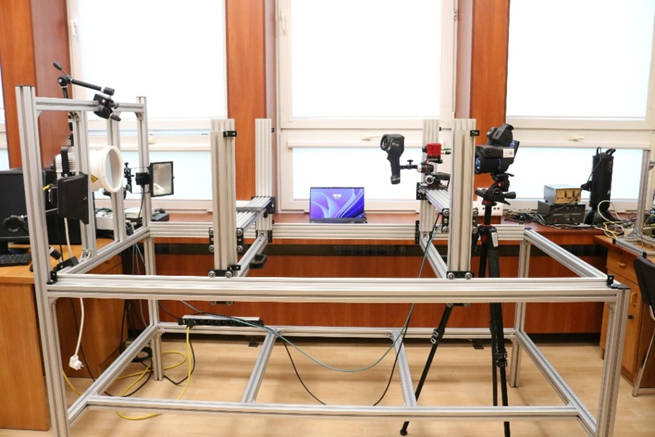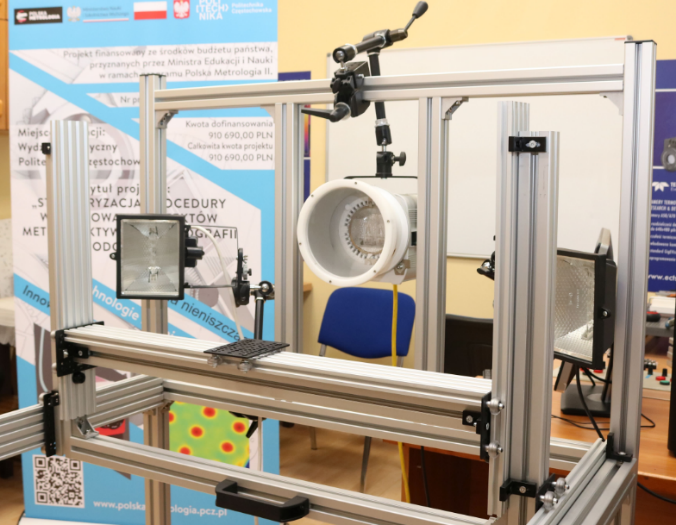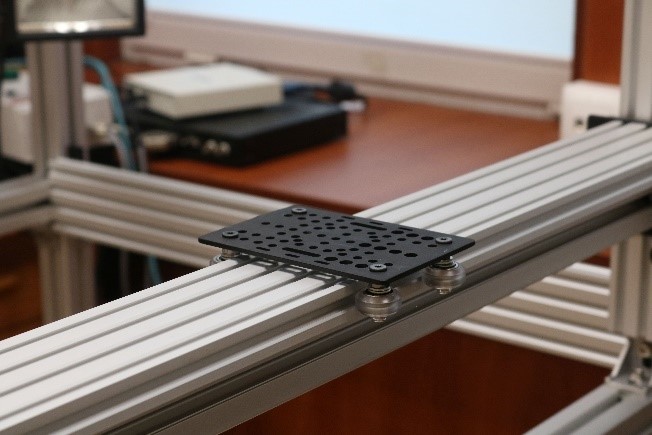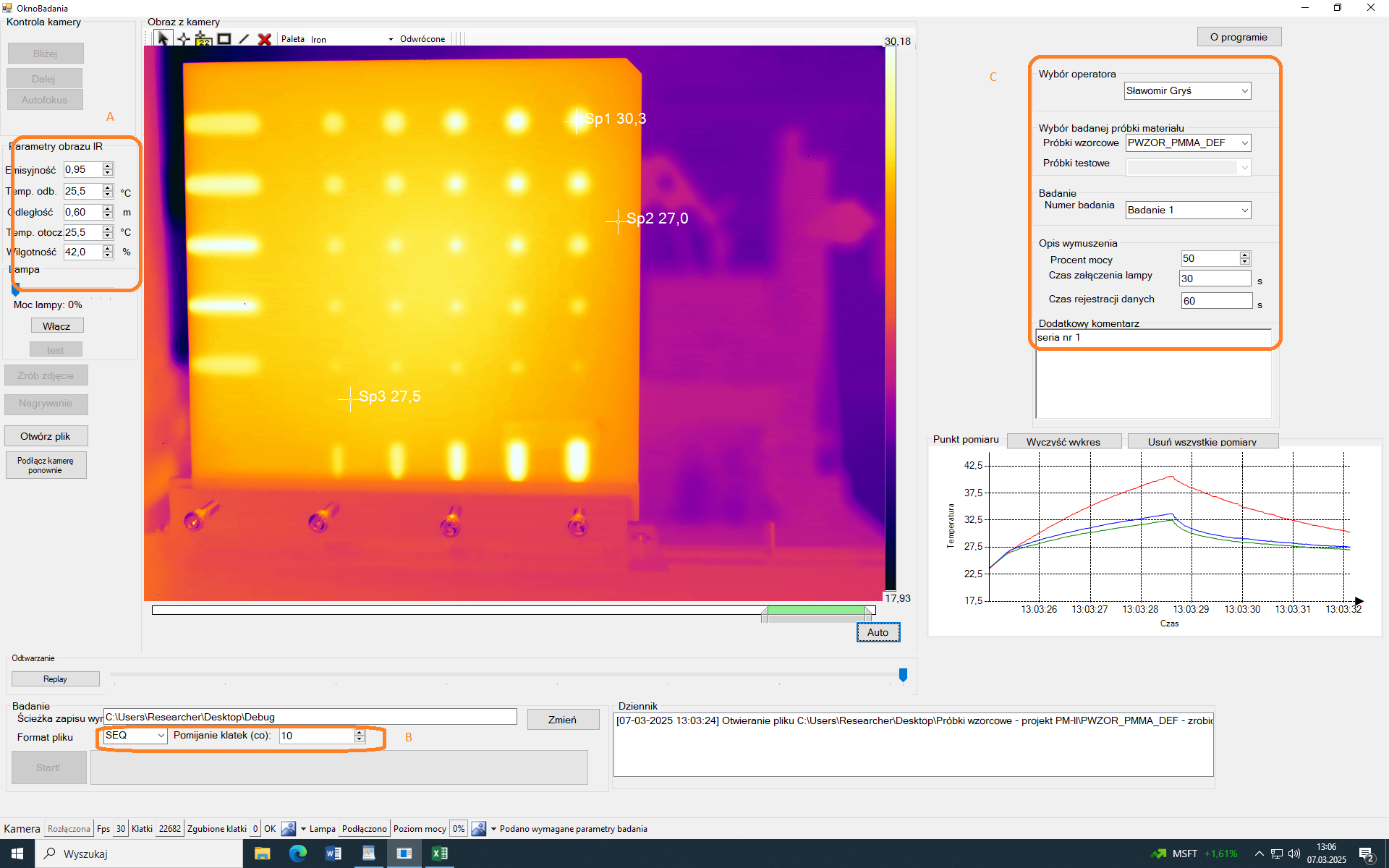The test stand for active infrared thermal imaging enables both reflection and transmission methods to be used. On the work table (Fig. 1.), made of V-slot aluminium profiles, there is a thermal excitation source (Fig. 2.) on one side and, opposite to it, a place for mounting specimens (Fig. 3). Depending on the method used, the stand allows the measuring apparatus (Fig. 4) to be placed in front of or behind the sample under test. The use of a movable trolley with a specimen holder allows the distance from both the thermal forcing source and the measuring apparatus to be varied.

Fig.1. View of the working table for active infrared thermography - laboratory in Room C119 of WE PCz

Fig.2. Sources of thermal forcing

Fig. 3. Carriage mounted on V-Slot profile - base for mounting the holder with test material

Fig. 4. Measuring apparatus, cameras: Flir E5, IRS 336, Flir T1020
A dedicated application for thermographic testing (Fig. 5) has been programmed for the research station, allowing precise monitoring of temperature changes in samples under irradiation. The application enables the definition of sample types and research operators. It records results in a standardized format (.seq and .csq) and allows the reconstruction of the experiment process. It also facilitates basic thermal image analysis in real-time, measurements, color palette selection, and adjustment of displayed image thresholds. The program was developed in C# within the Visual Studio environment using the Flir Atlas SDK libraries and National Instruments DAQmx.

Fig. 5 Thermographic testing application - Measurement stand
Using the Flir Atlas SDK library, the application allows full control over camera settings (A):
- emissivity;
- reflection temperature;
- distance of the camera from the sample under test;
- ambient temperature;
- humidity.
The application allows the recording of both single thermograms and entire sequences of thermal images. Measurements are taken in real time, allowing for subsequent analysis of the results. In addition, a downsampling function (B) is available.
To register thermograms, the data on the right-hand side (C) must be filled in beforehand. This requires an indication of the operator, a description of the test sample, the test number, a description of the forcing and an optional comment. Once the correct data has been entered and the connection to the instruments has been verified (connection status information is displayed in the lower status bar), the Start button is unlocked.
Copyright © Politechnika Częstochowska. Wszystkie prawa zastrzeżone.
 Politechnika Częstochowska uczelnią dostępną.
Politechnika Częstochowska uczelnią dostępną.


